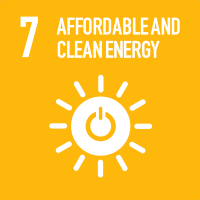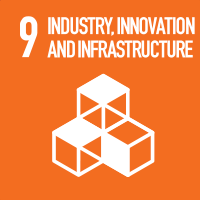Studying at the University of Verona
Here you can find information on the organisational aspects of the Programme, lecture timetables, learning activities and useful contact details for your time at the University, from enrolment to graduation.
Type D and Type F activities
This information is intended exclusively for students already enrolled in this course.If you are a new student interested in enrolling, you can find information about the course of study on the course page:
Laurea in Bioinformatica - Enrollment from 2025/2026Le attività formative di tipologia D sono a scelta dello studente, quelle di tipologia F sono ulteriori conoscenze utili all’inserimento nel mondo del lavoro (tirocini, competenze trasversali, project works, ecc.). In base al Regolamento Didattico del Corso, alcune attività possono essere scelte e inserite autonomamente a libretto, altre devono essere approvate da apposita commissione per verificarne la coerenza con il piano di studio. Le attività formative di tipologia D o F possono essere ricoperte dalle seguenti attività:
1. Insegnamenti impartiti presso l'Università di Verona
Comprendono gli insegnamenti sotto riportati e/o nel Catalogo degli insegnamenti (che può essere filtrato anche per lingua di erogazione tramite la Ricerca avanzata).
Modalità di inserimento a libretto: se l'insegnamento è compreso tra quelli sottoelencati, lo studente può inserirlo autonomamente durante il periodo in cui il piano di studi è aperto; in caso contrario, lo studente deve fare richiesta alla Segreteria, inviando a carriere.scienze@ateneo.univr.it il modulo nel periodo indicato.
2. Attestato o equipollenza linguistica CLA
Oltre a quelle richieste dal piano di studi, per gli immatricolati dall'A.A. 2021/2022 vengono riconosciute:
- Lingua inglese: vengono riconosciuti 3 CFU per ogni livello di competenza superiore a quello richiesto dal corso di studio (se non già riconosciuto nel ciclo di studi precedente).
- Altre lingue e italiano per stranieri: vengono riconosciuti 3 CFU per ogni livello di competenza a partire da A2 (se non già riconosciuto nel ciclo di studi precedente).
Tali cfu saranno riconosciuti, fino ad un massimo di 6 cfu complessivi, di tipologia F se il piano didattico lo consente, oppure di tipologia D. Ulteriori crediti a scelta per conoscenze linguistiche potranno essere riconosciuti solo se coerenti con il progetto formativo dello studente e se adeguatamente motivati.
Gli immatricolati fino all'A.A. 2020/2021 devono consultare le informazioni che si trovano qui.
Modalità di inserimento a libretto: richiedere l’attestato o l'equipollenza al CLA e inviarlo alla Segreteria Studenti - Carriere per l’inserimento dell’esame in carriera, tramite mail: carriere.scienze@ateneo.univr.it
3. Competenze trasversali
Scopri i percorsi formativi promossi dal TALC - Teaching and learning center dell'Ateneo, destinati agli studenti regolarmente iscritti all'anno accademico di erogazione del corso https://talc.univr.it/it/competenze-trasversali
Modalità di inserimento a libretto: non è previsto l'inserimento dell'insegnamento nel piano di studi. Solo in seguito all'ottenimento dell'Open Badge verranno automaticamente convalidati i CFU a libretto. La registrazione dei CFU in carriera non è istantanea, ma ci saranno da attendere dei tempi tecnici.
4. CONTAMINATION LAB
Il Contamination Lab Verona (CLab Verona) è un percorso esperienziale con moduli dedicati all'innovazione e alla cultura d'impresa che offre la possibilità di lavorare in team con studenti e studentesse di tutti i corsi di studio per risolvere sfide lanciate da aziende ed enti. Il percorso permette di ricevere 6 CFU in ambito D o F. Scopri le sfide: https://www.univr.it/clabverona
ATTENZIONE: Per essere ammessi a sostenere una qualsiasi attività didattica, incluse quelle a scelta, è necessario essere iscritti all'anno di corso in cui essa viene offerta. Si raccomanda, pertanto, ai laureandi delle sessioni di dicembre e aprile di NON svolgere attività extracurriculari del nuovo anno accademico, cui loro non risultano iscritti, essendo tali sessioni di laurea con validità riferita all'anno accademico precedente. Quindi, per attività svolte in un anno accademico cui non si è iscritti, non si potrà dar luogo a riconoscimento di CFU.
5. Periodo di stage/tirocinio
Oltre ai CFU previsti dal piano di studi (verificare attentamente quanto indicato sul Regolamento Didattico): qui informazioni su come attivare lo stage.
Verificare nel regolamento quali attività possono essere di tipologia D e quali di tipologia F.
Insegnamenti e altre attività che si possono inserire autonomamente a libretto
| years | Modules | TAF | Teacher |
|---|---|---|---|
| 2° 3° | Introduction to Docker | D |
Franco Fummi
(Coordinator)
|
| 2° 3° | Introduction to quantum mechanics for quantum computing | D |
Claudia Daffara
(Coordinator)
|
| 2° 3° | Introduction to smart contract programming for ethereum | D |
Sara Migliorini
(Coordinator)
|
| 2° 3° | Introduction to Robotics for students of scientific courses. | D |
Andrea Calanca
(Coordinator)
|
| 2° 3° | Web and mobile app design using react and react native | D |
Graziano Pravadelli
(Coordinator)
|
| 2° 3° | Rapid prototyping on Arduino | D |
Franco Fummi
(Coordinator)
|
| 2° 3° | Firmware development with bluetooth low energy (BLE) protocol and freertos operating system | D |
Franco Fummi
(Coordinator)
|
| years | Modules | TAF | Teacher |
|---|---|---|---|
| 2° 3° | Artificial intelligence | D |
Alessandro Farinelli
(Coordinator)
|
| 2° 3° | Introduction to Robotics for students of scientific courses. | D |
Andrea Calanca
(Coordinator)
|
| 2° 3° | LaTeX Language | D |
Enrico Gregorio
(Coordinator)
|
| 2° 3° | Python programming language | D |
Carlo Combi
(Coordinator)
|
| 2° 3° | HW components design on FPGA | D |
Franco Fummi
(Coordinator)
|
| 2° 3° | Programming Challanges | D |
Romeo Rizzi
(Coordinator)
|
| 2° 3° | Protection of intangible assets (SW and invention)between industrial law and copyright | D |
Mila Dalla Preda
(Coordinator)
|
| years | Modules | TAF | Teacher |
|---|---|---|---|
| 1° | Subject requirements: mathematics | D |
Franco Zivcovich
(Coordinator)
|
Firmware development with bluetooth low energy (BLE) protocol and freertos operating system (2023/2024)
Teaching code
4S012259
Teacher
Coordinator
Credits
3
Also offered in courses:
- Firmware development with bluetooth low energy (BLE) protocol and freertos operating system of the course Bachelor's degree in Applied Mathematics
- Firmware development with bluetooth low energy (BLE) protocol and freertos operating system of the course Bachelor's degree in Computer Science
- Firmware development with bluetooth low energy (BLE) protocol and freertos operating system of the course Master's degree in Mathematics
- Firmware development with bluetooth low energy (BLE) protocol and freertos operating system of the course Master's degree in Data Science
- Firmware development with bluetooth low energy (BLE) protocol and freertos operating system of the course Bachelor's degree in Human Centered Medical System Engineering
- Firmware development with bluetooth low energy (BLE) protocol and freertos operating system of the course Master's degree in Computer Engineering for Robotics and Smart Industry
Language
Italian
Scientific Disciplinary Sector (SSD)
NN - -
Period
Semester 1 dal Oct 2, 2023 al Jan 26, 2024.
Erasmus students
Not available
Courses Single
Not Authorized
Learning objectives
This 8-hour course was designed to respond to the growing demand for skills in the field of firmware development on microcontrollers capable of communicating with the BLE protocol using the FreeRTOS Operating System in the IoT context. The main goal is to provide a solid foundation of knowledge and skills to enable developers to create firmware for IoT devices using these technologies.
Prerequisites and basic notions
Computer Architecture courses
Program
* Session 1: Introduction to BLE and IoT (1.5 hours)
Overview of Bluetooth Low Energy (BLE)
a. Differences between classic Bluetooth and BLE
b. Applications and Benefits of BLE in IoT
Basic IoT Concepts
a. Definition and main characteristics of IoT
b. Role of BLE in IoT
c. Common Use Cases in IoT
Architecture and Operation of BLE in IoT
a. Roles of central and peripheral devices
b. GATT (Generic Attribute Profile) concepts and services
c. BLE Features, Descriptors and Profiles
* Session 2: Introduction to Firmware on STM and Espressif Microcontrollers (1.5 hours)
4. Introduction to STM and ESP Microcontrollers
a. Main features of STM and ESP microcontrollers
b. Advantages and disadvantages of each platform Development environments and tools
a. Overview of STM/ESP microcontroller development environments
b. Setting up the development environment and toolchain Introduction to FreeRTOS
a. Basic concepts of a real-time operating system
b. Benefits and features of FreeRTOS
* Session 3: Firmware development on ST/ESP microcontrollers with BLE and FreeRTOS (3 hours)
7. Configuring the microcontroller to use BLE
a. Selection of suitable STM/ESP microcontroller
b. Implementation of BLE services, features and profiles
c. Publishing data via BLE
Introduction to Programming with FreeRTOS
a. Creating tasks and managing concurrency
b. Management of events and message queues
c. Using semaphores and mutexes for synchronization Development of firmware for managing central devices
a. Scanning and discovery of peripheral devices
b. Connecting to a peripheral device
c. Reading and writing features
* Session 4: Practical examples and best practices for IoT firmware development with BLE and FreeRTOS (2 hours)
10. Project example: Implementation of an IoT system with firmware on STM/ESP microcontroller using BLE and FreeRTOS
a. Configuring peripheral devices and features
b. Implementation of firmware for IoT data and communications management
Best practices for IoT firmware development with BLE and FreeRTOS
a. Error and exception handling
b. Security and privacy considerations in IoT
c. Optimize Performance and Power Consumption IoT
Resources and Insights with BLE, FreeRTOS, and STM/ESP Microcontrollers
a. Documentation and support resources
b. Online communities and discussion forums
Didactic methods
Presentation of the theory concepts with hours of teaching and following exemplification in the laboratory.
Learning assessment procedures
The exam consists of a project to be carried out in groups or individually.
Evaluation criteria
To pass the exam, students must demonstrate that they are able to correctly apply the concepts that will be addressed during the course. The exam will consist of a project, which may be chosen from a set of proposed projects, or proposed by the student (to be agreed with the teacher).
Criteria for the composition of the final grade
The final grade is calculated taking into consideration the quality of the project carried out.
Exam language
Italiano


